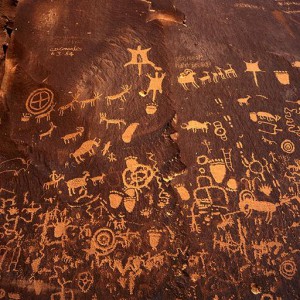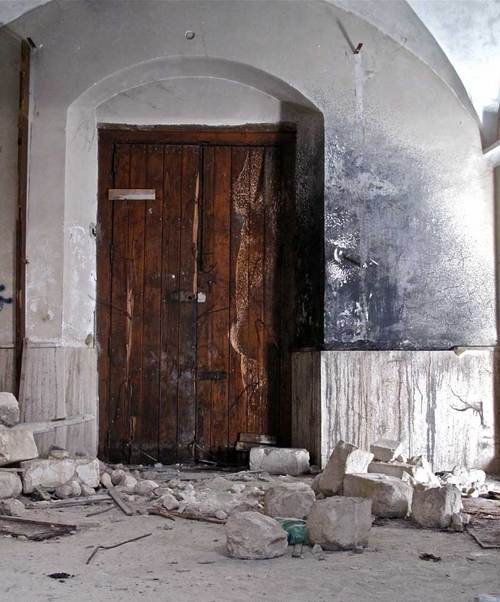Gra-fi-ti [gruh-fee-tee]: markings, as initials, slogans, or drawings, written, spray-painted, or sketched on a sidewalk, wall of a building or public restroom.
This is the definition of graffiti in the dictionary. Everybody knows it. A tricky topic to work with I thought immediately. How was I going to tell you something new about this?
I started my research by defining what graffiti actually is. Soon I found out that the word graffiti means ‘little scratch’. I thought this was a detail of quite some importance as I assume most people think graffiti is mainly related to spray paint. But for thousands of years graffiti was made by scratching a layer away, revealing the layer beneath it. The first graffiti dates back 30.000 BC.
But also in ancient ‘scratched’ graffiti there is a big difference. For a long time graffiti was in the form of prehistoric cave paintings that were often placed in ceremonial and sacred locations inside of the caves. And we all know the Egyptian wall decorations and that only because of those we know the history of ancient Egypt. Unlike modern graffiti these inscriptions were not made to make a public statement but to visualize their religion or traditions for example. The First ‘modern style’ graffiti survives in the ancient Greek city of Ephesus (in modern-day Turkey). Local guides say it is an advertisement for prostitution. Located near a mosaic and stone walkway, the graffiti shows a hand print that vaguely resembles a heart, along with a footprint and a number. This is believed to indicate that a brothel was nearby, with the hand print symbolizing payment.
Still there was no political or social ideals displayed back in the times. graffiti consisted of Latin curses, magic spells, declarations of love, alphabets, political slogans and famous literary quotes, providing insight into ancient street life.
One inscription gives the address of a woman named Novellia Primigenia of Nuceria, a prostitute, apparently of great beauty, whose services were much in demand.
or a nice example of love ache:
Quisquis amat. veniat. Veneri volo frangere costas
fustibus et lumbos debilitare deae.
Si potest illa mihi tenerum pertundere pectus
quit ego non possim caput illae frangere fuste?
Whoever loves, go to hell. I want to break Venus’s ribs
with a club and deform her hips.
If she can break my tender heart
why can’t I hit her over the head?
-CIL IV, 1284.
When we think of the phenomenon graffiti nowadays, I assume people either think of individual expression (spraying names, political ideals etc on public spaces), or a form of art. Type in the word graffiti in Google and the masterpieces from Banksy immediately pop up. Although people never stopped making graffiti the way they did it in ancient times. we still carve our name and from the one we love in trees, doors and tables.
if we look at graffiti purely as a technique, this was originally scratching. taking a layer away to reveal another layer beneath it. this technique was in the first place used by potters who would glaze their wares and then scratch a design into it.
scratching is even more permanent than our modern graffiti is. spray paint can be removed although it’s quite a intense job, but something that is taken ‘scratched’ away is impossible to recover. A scratched work will stay there forever.
A modern artist using the scratch technique is the young Portuguese Alexandre Farto. He makes huge wall murals by scratching faces out of the surface. he doesn’t only use the surface as a material to work on, he integrates the whole wall, building and even surrounding into his work.
So finally, as a conclusion to this all we could say that the term graffiti actually doesn’t stand for our modern way of making graffiti. Or at least that it’s a different way of approaching it. It is a phenomenon that over the time lost a lot of it’s original characteristics.
A little heart scratched into a tree comes closer to graffiti than a mural from Banksy does..

